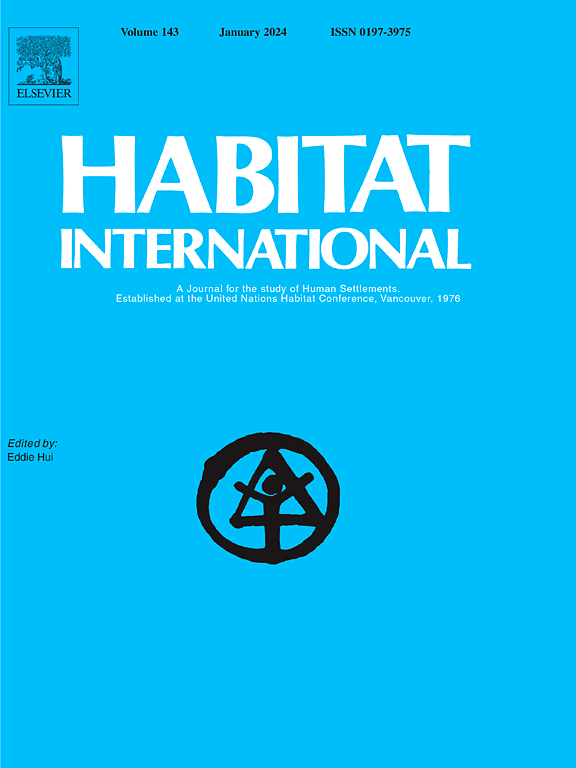Has the supply of rural public basic facilities in China inhibited village courtyard Idling? An investigation from the perspectives of layout types and objective-subjective evaluation
IF 6.5
1区 经济学
Q1 DEVELOPMENT STUDIES
引用次数: 0
Abstract
Insufficient rural public basic facility supply is widely recognized as one of the key factors contributing to rural courtyard idleness. However, existing research has not reached consensus on the mechanisms by which different types of public basic facility influence idle courtyards, nor has it thoroughly distinguished between the differential impacts of objective basic facility supply and villagers’ subjective satisfaction. Based on questionnaire survey data from 400 Chinese villages in 2020, this study categorizes rural public infrastructure according to spatial distribution characteristics into universally distributed facilities (UDF) and centrally distributed facilities (CDF). The research quantitatively analyzes how the objective supply levels and villagers’ subjective satisfaction of these two facility types affect idle courtyards in Chinese villages. The study finds: (1) Nationwide, the comprehensive supply level of CDF significantly suppresses the risk of idle courtyards in villages, primarily by increasing subjective satisfaction with CDF, thereby reducing villagers’ outmigration intentions. The suppressive effect of UDF is not significant nationwide but shows significant and robust inhibitory effects in central and western regions, mainly determined by the objective supply level of rural public basic facility. (2) Regarding specific facilities, high-level supply of public transportation, markets and shops, primary schools, and elderly care institutions significantly reduces idle courtyards across the country. In central and western regions, the supply levels of tap water and public toilets also demonstrate significant inhibitory effects. (3) The inhibitory effect of rural public basic facility supplies exhibits notable regional and village-size heterogeneity, with the inhibitory effect of subjective satisfaction with CDF only significant in medium and large villages. This paper reveals the intrinsic mechanisms by which rural public basic facility supplies inhibitory effect idle courtyards from the perspective of spatial layout and objective-subjective supply. It provides scientific evidence for the governance of idle courtyards in Chinese villages and precision investment in public facilities, while also offering valuable reference for rural public basic facility policy formulation in other countries.
中国农村公共基础设施的供给是否抑制了乡村庭院闲置?从布局类型和主客观评价的角度进行考察
农村公共基础设施供给不足是造成农村大院闲置的重要因素之一。然而,现有研究尚未就不同类型的公共基础设施对闲置庭院的影响机制达成共识,也未彻底区分客观基础设施供给的差异影响与村民主观满意度的差异影响。本研究基于2020年中国400个村庄的问卷调查数据,将农村公共基础设施按空间分布特征分为普遍分布设施(UDF)和集中分布设施(CDF)。本研究定量分析了这两种设施类型的客观供给水平和村民的主观满意度对中国农村闲置庭院的影响。研究发现:(1)在全国范围内,CDF的综合供给水平显著抑制了村庄闲置庭院的风险,主要是通过提高对CDF的主观满意度,从而降低村民的外迁意愿。UDF的抑制作用在全国范围内并不显著,但在中西部地区表现出显著且稳健的抑制作用,这主要取决于农村公共基础设施的客观供给水平。(2)在具体设施方面,公共交通、市场和商店、小学、养老机构的高水平供给显著减少了全国闲置庭院。在中西部地区,自来水和公共厕所的供应水平也表现出明显的抑制作用。(3)农村公共基础设施供给的抑制效应具有显著的区域和村级异质性,主观满意度的抑制效应仅在中大型村级具有显著性。本文从空间布局和主客观供给的角度揭示了农村公共基础设施供给抑制闲散院落效应的内在机制。为我国农村闲置院落治理和公共设施精准投资提供科学依据,同时也为其他国家农村公共基础设施政策制定提供有价值的参考。
本文章由计算机程序翻译,如有差异,请以英文原文为准。
求助全文
约1分钟内获得全文
求助全文
来源期刊

Habitat International
Multiple-
CiteScore
10.50
自引率
10.30%
发文量
151
审稿时长
38 days
期刊介绍:
Habitat International is dedicated to the study of urban and rural human settlements: their planning, design, production and management. Its main focus is on urbanisation in its broadest sense in the developing world. However, increasingly the interrelationships and linkages between cities and towns in the developing and developed worlds are becoming apparent and solutions to the problems that result are urgently required. The economic, social, technological and political systems of the world are intertwined and changes in one region almost always affect other regions.
 求助内容:
求助内容: 应助结果提醒方式:
应助结果提醒方式:


